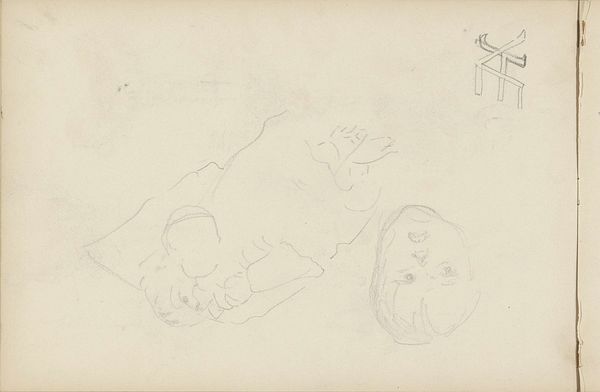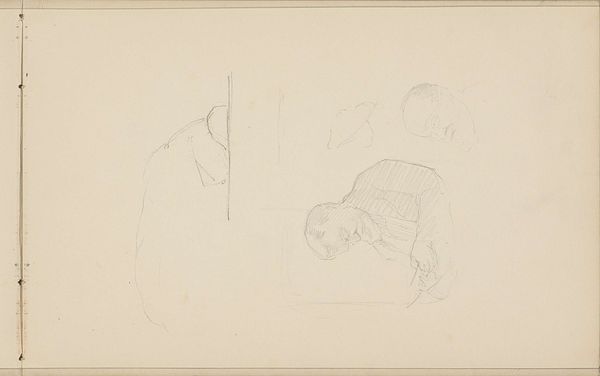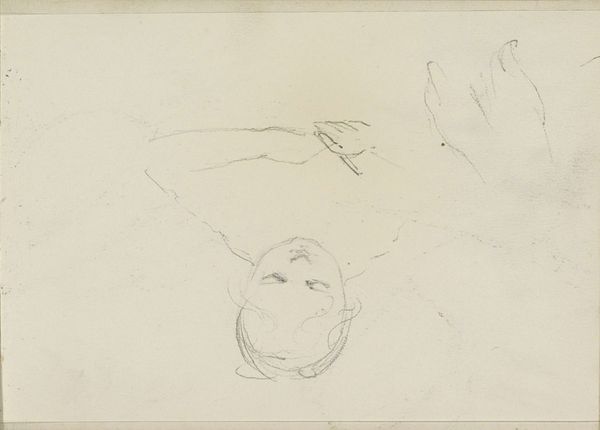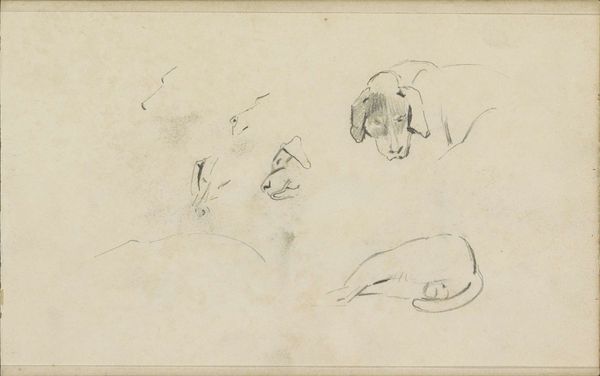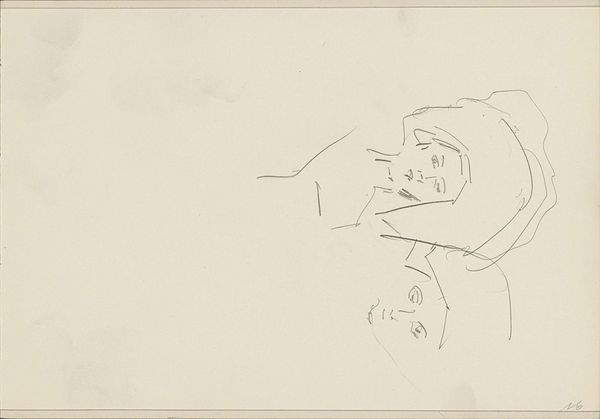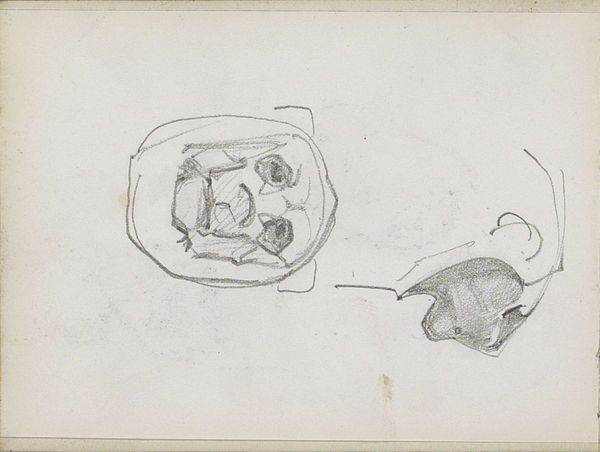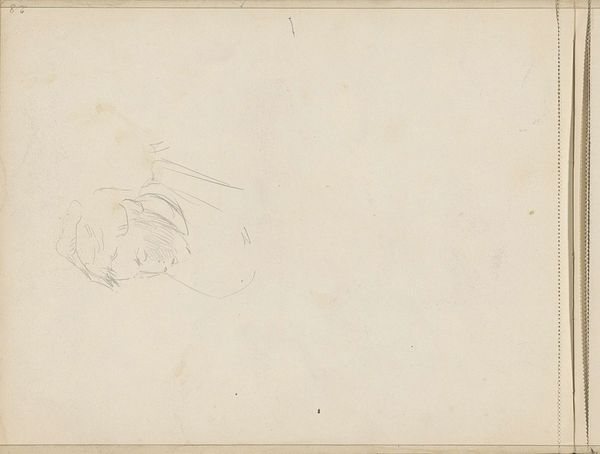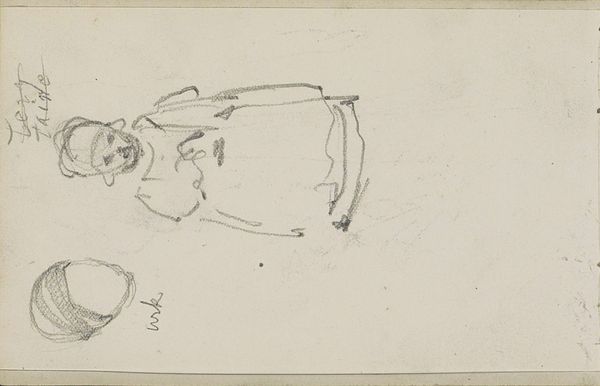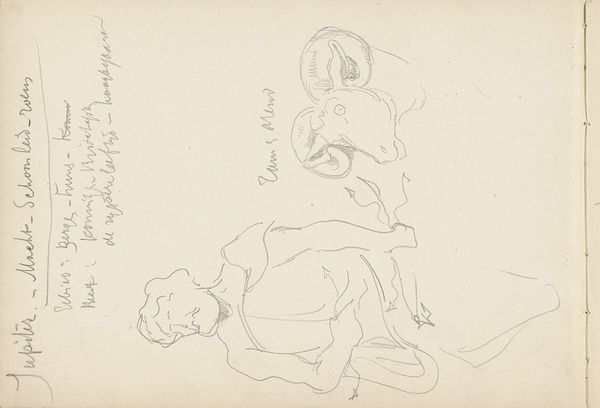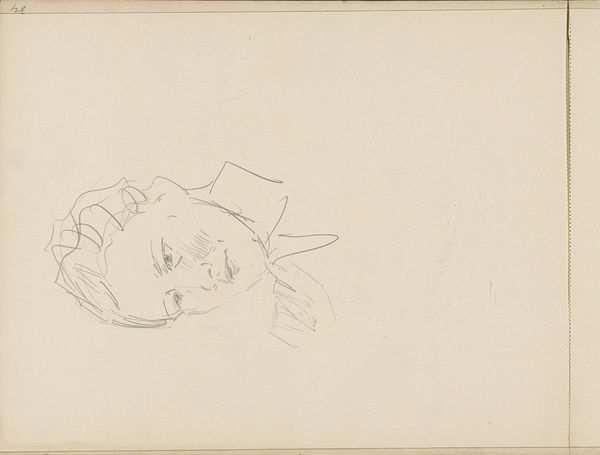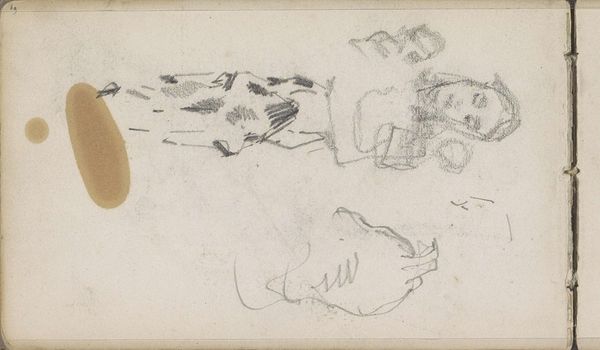
drawing, paper, pencil
#
portrait
#
drawing
#
amateur sketch
#
imaginative character sketch
#
statue
#
toned paper
#
light pencil work
#
pencil sketch
#
figuration
#
paper
#
personal sketchbook
#
idea generation sketch
#
ink drawing experimentation
#
pencil
#
sketchbook drawing
#
sketchbook art
Copyright: Rijks Museum: Open Domain
George Clausen sketched "Figure and a Lion's Head, presumably after a sculpture" using graphite. Clausen was an important figure in British art during the late 19th and early 20th centuries. He stood apart from the Royal Academy establishment by embracing a more naturalistic and socially conscious style. Though the drawing's date is unknown, it likely reflects the period's broader interest in classical forms and the artist's own exploration of sculptural subjects. The sketch's simplicity invites us to consider the role of classical imagery within art education. During Clausen’s time, copying from sculptures was a standard practice, shaping artistic taste. Was Clausen's drawing part of this academic exercise, or was he engaging critically with the established canon? To truly understand the work's place in Clausen's oeuvre, and its broader art historical context, one might delve into exhibition reviews, artists' biographies, and the records of art academies of the time. Art's meaning changes, depending on its social and institutional context.
Comments
No comments
Be the first to comment and join the conversation on the ultimate creative platform.
